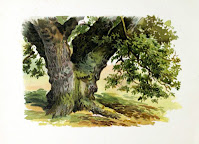17 May 2025
THE INDIAN CARD : UNDERSTANDING A TRIBE'S ENROLLMENT PROCESS : LINEAGE OR HOW MUCH ANCESTRY? FIRST STEP IS TRIBAL CONSTITUTION
14 May 2025
THE INDIAN CARD : SELF IDENTIFYING AS NATIVE AMERICAN : THE CHEROKEE and also MISINFORMATION BY FAMILY : ANCESTRY WORSHIP BOOK REVIEW
Excerpt page 2: Self-identifying, though, is just one piece of a very convoluted puzzle. In the United States, there are myriad ways a Native person may be required to demonstrate their identity. That list includes Tribal enrollment. Yet, at the same time that the number of people self-identifying as Native in this country has increased to over 9.7 million, the number of people enrolled in Tribes is much, much lower.
This nuance is particularly pronounced among people who identify as Cherokee. As of 2023, just over 450,000 people were formally enrolled members (called citizens) of the Cherokee Nation. That is, 450.000 people have some sort of card, which they applied for and received through the process the Cherokee nation determined. Another (approximately 14,000 people are enrolled in the United Keetoowah Band of Cherokee Indians in Oklahoma. Together, about 480,000 people in this country are enrolled in one of three federally recognized Cherokee Tribes.
Excerpt pages 2-3 : Scholars have written a lot about this phenomenon - that because of complex issues that includes patterns of disconnection, relocation, and misrepresentation in family lore, the number of people claiming Cherokee heritage is very high. But we see this not just with Cherokee. This same gap, between claiming Native identity and being formally verified as having it, exists for many other Tribes in the United States.
Over the last 250 years, the U.S. government has ping-ponged between full-scale "termination" of Native peoples to (alleged) protectionism of them to everything in between. And often what has been at stake - besides the obvious human lives and land rights - is sovereignty. That is, in losing their land and, often, their lives, Tribes have clung to their rights of self-determination for continued survival.
07 May 2025
THE INDIAN CARD by CARRIE LOWRY SCHUETTPELZ : ANCESTRY WORSHIP BLOGSPOT BOOK REVIEW (AND A LIST OF TRIBES MENTIONED IN THE BOOK)
THE INDIAN CARD by CARRIE LOWRY SCHUETTPELZ
In this blog I sometimes post about Native American as well as African-American research as UNITED STATES OF AMERICA / AMERICAN research. From the hits I get on posts about Native American ancestry, I know that some of my readers are interested in making a claim to be considered "a member of the tribe." But I may have said this before; I have never gotten cooperation from the few tribes I've contacted, hoping that someone on that side would help a client become a member of the tribe. In the years since, as the Internet grew, more tribes have websites that provide information on what they consider and how they process enrollment, which is helpful. I've heard various "reasons why" some tribes are not helpful, including that those who have rights to money from casinos do not want to further share it. I'm always interested in what the processes to claim tribal membership might be.
The Indian Card, subtitled Who Gets To Be Native American, is a book about tribal enrollment from the perspective of a woman who is part of the Lumbee tribe in North Carolina. Carrie Lowry Schuettpelz has other heritages, but she focused on claiming the Native American aspect of her ancestry. Her mother had enrolled her when she was six. She was not raised to feel a part of that tribe, living over a thousand miles from where the Lumbee tribe is headquartered, but the card would be back in her hands years later after testing and reenrollment. In this book, she wrote about her personal experience as well as the frustrations of the attempt to collect information that might be valuable to anyone who wishes to do the same.
In this book author Carrie Lowry Schuettpelz brings up the different ways that Tribes consider people for membership, the questions asked by the United States Census, the Dawes Rolls, and much more.
You will find the following tribes mentioned - some detailed information, some just a note.
The Lumbee, Cherokee, Navaho, Meskwaki, Oneida, Apache, Blackfeet, Checotah, United Keetoowah-Cherokee, Chickasaw, Chippewa, Choctaw, Creek, Dakota, Seminole, Hopi, Iroquois, Kalona, Lakota, Lenape, Mohawks, Muscogee (Creek),Naticoke, Nooksack, Ojibwe, Quechan, Seneca, Seminole, Shawnee, Sioux, Tohono O'odham, Tulalip, Tuscarora, Wyandot, Wyandotte....
I highly recommend this book, which was so well written and thought out - so informative. For the purposes of Ancestry Worship - Genealogy BlogSpot, I will excerpt information that will be especially interesting to my readers in the next few posts.
THE GROWING NUMBER OF AMERICANS WHO REPORT BEING NATIVE AMERICAN ON UNITED STATES CENSUS
According to the 2000 U.S. Census, about 4.1 million people checked the Indian box, a term I use to describe the carousel of options that have appeared for Native Americans and Alaska Natives. By 2010, that number had increased to 5.2 million. And in 2020. 9.7 million people - more than twice the 2000 county - self-identified as Native.
Certainly, there have been a few changes to the way we count. In 2000, for example, for the first time in census history, people could check more than one box for race. So, if we assume that people were previously choosing between their racial identities, the 2000 census presented an interesting change in methodology. In deed, the number of people who identified as Native in the 1990 census was just under 2 million, less than half the number in 2000. There has also been a significant push to count more of the Native people living on reservations, a population that has a higher census :undercount" of any population in the United States, at 5.6 percent...... Over the last ten years, increased Tribal consultation has taken place, as have efforts to "get out the count" in native communities.
C 2025 Ancestry Worship - Genealogy BlogSpot



